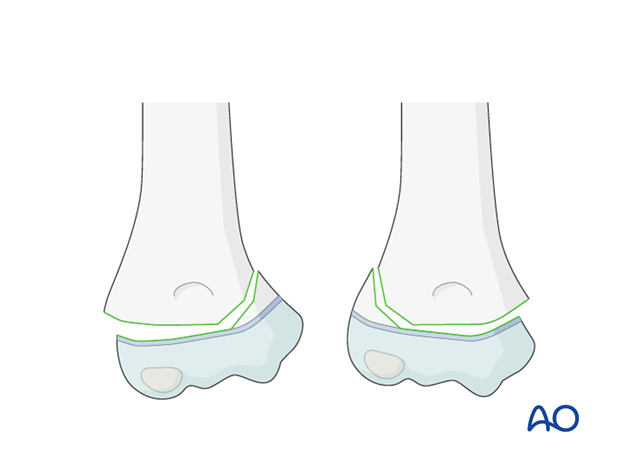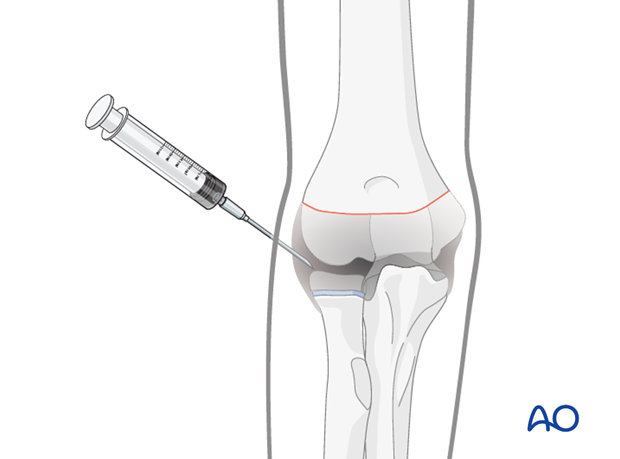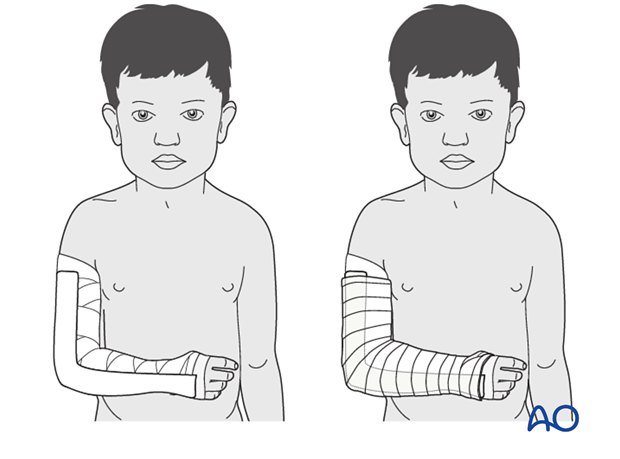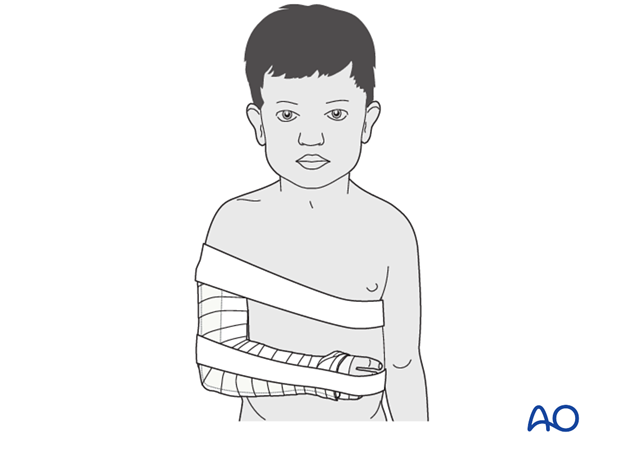Splint immobilization
1. General considerations
Note: Physeal separation of the distal humerus with a metaphyseal fragment may be associated with nonaccidental injury. There is a risk of compartment syndrome associated with management in hyperflexion. Treatment of these injuries can also be technically demanding because of the small size of the child.
Rather than undertaking treatment that could be risky, the surgeon should take into account the considerable potential for modelling of a malunion, particularly in the infant.
Children without evidence of fracture callus are often brought to the operating room for examination under anesthesia in order to establish a diagnosis.
Fracture stability and position must be checked, arthrography can be very useful as described in the diagnosis section. If the fracture is found to be stable and in an acceptable position clinically and radiographically, then it can be managed with protective immobilization.

Arthrography is indicated when the fragment cannot clearly be identified.
No force is necessary to realign the epiphyseal fragment with the shaft. Forceful maneuvers could damage the physis.

2. Immobilization
The arm is immobilized in a splint with the elbow in 90° flexion.

Bandaging the arm to the body is comfortable in young children.

3. Aftercare
Analgesia, including ibuprofen and paracetamol, should be administered regularly.
Compartment syndrome
Compartment syndrome is a possible early postoperative complication that may be difficult to diagnose in younger children.
The child should be examined frequently, to ensure finger range of motion is comfortable and adequate.
Neurological and vascular examination should also be performed.
Increasing pain, decreasing range of finger motion, or deteriorating neurovascular signs should prompt consideration of compartment syndrome.

Discharge care
When the child is discharged from the hospital, the parent/caregiver should be taught how to assess the limb.
They should also be advised to return if there is increased pain or decreased range of finger motion.
It is important to provide parents with the following additional information:
- The warning signs of compartment syndrome, circulatory problems and neurological deterioration
- Hospital telephone number
- Information brochure
Removal of cast or splint
Splints or casts are usually removed within 2 weeks of the injury.
Recovery of motion
As symptoms recover, the child should be encouraged to remove the sling and begin active movements of the elbow.
The majority of elbow motion is recovered rapidly, usually within two months of splint removal.













